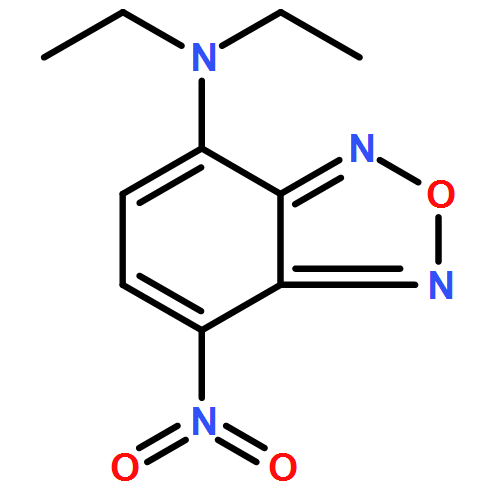BASIC PARAMETERS Find an error
The use of the fluorescence technique for monitoring the UV-curing of two polyurethane-based adhesives containing acrylic monomers is described in this paper. The increase of the fluorescence intensity as well as the maximum wavelength shift on emission was measured in real time during the photopolymerisation process. The established relationship between fluorescence and conversion allowed monitoring of the course of the process beyond vitrification. In that sense, all the fluorescent probes studied were sensitive to the formulation curing and in some cases, the range of conversions in which they were useful was limited by their size and probably, by the free volume fraction in the polymeric matrix. Moreover, polymerisation rates were obtained from fluorescent kinetic profiles and used to carry out a comparative study of the different photosensitive formulations. The real time FTIR (RTIR) results show the highest photoinitiation efficiency of the photoinitiator 2-benzyl-2-N,N-dimethylamino-1-(4-morpholinophenyl)-1-butanone (Irgacure 369) compared to that of 2,2-dimethoxy-2-phenylacetophenone (Irgacure 651). The limitation of RTIR method for monitoring slow post-reactions was overcome by the use of the fluorescence-based method. Thus, a fluorescence intensity increase and a blue-shift of the emission band were measured after the limiting conversion was attained. Dynamic mechanical analysis showed that the glass transition temperature of the polymer increases during prolonged exposure to irradiation confirming the increase of the system rigidity.
The use of the fluorescence technique for monitoring the UV-curing of two polyurethane-based adhesives containing acrylic monomers is described in this paper. The increase of the fluorescence intensity as well as the maximum wavelength shift on emission was measured in real time during the photopolymerisation process. The established relationship between fluorescence and conversion allowed monitoring of the course of the process beyond vitrification. In that sense, all the fluorescent probes studied were sensitive to the formulation curing and in some cases, the range of conversions in which they were useful was limited by their size and probably, by the free volume fraction in the polymeric matrix. Moreover, polymerisation rates were obtained from fluorescent kinetic profiles and used to carry out a comparative study of the different photosensitive formulations. The real time FTIR (RTIR) results show the highest photoinitiation efficiency of the photoinitiator 2-benzyl-2-N,N-dimethylamino-1-(4-morpholinophenyl)-1-butanone (Irgacure 369) compared to that of 2,2-dimethoxy-2-phenylacetophenone (Irgacure 651). The limitation of RTIR method for monitoring slow post-reactions was overcome by the use of the fluorescence-based method. Thus, a fluorescence intensity increase and a blue-shift of the emission band were measured after the limiting conversion was attained. Dynamic mechanical analysis showed that the glass transition temperature of the polymer increases during prolonged exposure to irradiation confirming the increase of the system rigidity.
A series of different copolymers of 2-acrylamido-2-methylpropanesulfonic acid, AMPS, and butyl methacrylate, BuMA, were prepared by free radical polymerization at 70°C in N,N ′-dimethylformamide under nitrogen atmosphere varying the composition feed. The polyamphiphiles isolation was carried out by passing the polymeric solutions through a sodium cation exchange resin. The stabilities of the obtained homopolymers and copolymers were characterized by thermal analysis (TGA, DSC). Fluorescent probes were used to study the hydrophobic microdomain formation due to the association phenomena observed in water solution when the amphiphilic copolymer concentration was increased. The fluorescence emission of amino derivatives of 7-nitrobenz-2-oxa-1,3-diazole (NBD) showed sensitivity to detect polarity and microviscosity changes in the microenvironment of the copolymers. The minimum concentration for the hydrophobic microdomains formation, Cm , decreased by increasing the molar fraction of BuMA in the AMPSCo copolymers. Hence, copolymer composition and charge density allowed tuning the pseudo-micellar characteristics of these new polyamphiphilic copolymers.
The photopolymerization of acrylic-based adhesives has been studied by Fourier transform infrared and fluorescence analysis in real time. Real-time infrared spectroscopy reveals the influence of the nature of the photoinitiator on the kinetics of the reaction. Furthermore, the incident light intensity dependence of the polymerization rate shows that primary radical termination is the predominant mechanism during the initial stages of the curing of the acrylic system with bis(2,4,6-trimethylbenzoyl) phenyl phosphine oxide (TMBAPO) as a photoinitiator. The fluorescence intensity of selected probes increases during the ultraviolet curing of the adhesive, sensing microenvironmental viscosity changes. Depending on the nature of the photoinitiator, different fluorescence–conversion curves are observed. For TMBAPO, the fluorescence increases more slowly during the initial stage because of the delay in the gel effect induced by primary radical termination. Mechanical tests have been carried out to determine the shear modulus over the course of the acrylic adhesive ultraviolet curing. In an attempt to extend the applications of the fluorescence probe method, we have undertaken comparisons between the fluorescence changes and shear modulus. Similar features in both curves confirm the feasibility of the fluorescence method for providing information about microstructural changes during network formation. © 2002 Wiley Periodicals, Inc. J Polym Sci Part A: Polym Chem 40: 4236–4244, 2002


